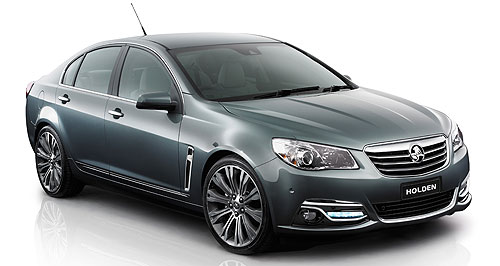News - HoldenHolden loses $152.8 million in 2012Red ink: Sales of the Australian-made Holden Cruze fell in 2012, but a recent facelift should turn the tables. Unfavourable exchange rate, fewer sales cause Holden to lose $152.8 million in 20128 May 2013 GM HOLDEN posted its first annual loss in three years today – and its second largest loss on record – with 2012 financial figures showing the company ended last year $152.8 million in the red. The company blamed the after-tax figure on continued sales declines for its Australian-made Cruze and Commodore, a lack of Colorado ute stock as it changed over to a new generation, and a write-down of its local asset base – the result of reduced market demand for its cars. The loss equates to about $1330 for each car Holden sold in Australia. According to its financial statement, Holden received $73.5 million in Australian government grants under the Automotive Transformation Scheme (ATS) in 2012. The annual loss comes after two years in the black, with Holden posting an $89.7 million profit for the 2011 calendar year and making more than $112 million in 2010. Last year’s loss was made on consolidated revenue of $4.0 billion – down from $4.3 billion in 2011. With almost 60 per cent of its sales coming from locally made cars, Holden is particularly sensitive to the negative side of Australia’s strong dollar – the impact on domestic manufacturing. Holden’s sales figures of 114,665 units in 2012 was the lowest tally in almost two decades. The Commodore’s 30,532 sales was down 24.8 per cent, while Cruze dropped 13.7 per cent to 29,161 units. The company produced 82,172 vehicles in Australia in 2012 – down from 90,424 in 2011, and well down on 2008 when it made 119,246 cars here. It also produced 74,526 engines here, down from 101,019 in 2011, after losing significant V6 sales to China. Despite the unfavourable dollar, it exported 13,778 cars to New Zealand, the Middle East, the US and South Africa. In 2013, this number is likely to grow as it sends the VF Commodore Stateside, where it will be badged as the Chevrolet SS. The one-off, $226 million cost pegged to a restructure of Holden’s business was largely composed of a write-down of Holden’s manufacturing base in Elizabeth, a move aimed at downgrading production to a single daily shift to match diminished demand. The company axed 170 jobs at its Elizabeth plant in South Australia last November. It also said it would reduce its workforce by another 500 workers in April this year. Despite this year’s loss, Holden managing director Mike Devereux said the company was continuing to invest in Australia – with a pledge to make cars here until at least 2022 still intact. “If we took a short-term view, it would be better (in terms of exchange rates) for us to import,” he said. “But this is not our plan. We have a long-term plan for the future, supported by our research and development spend. Also, the business case for local manufacturing and spending becomes a lot stronger if the Australian dollar drops." Holden invested $197 million in research and development in Australia last year, taking the spend over the last five years to more than $1 billion. In April, the company released its mechanically revised Cruze, and will launch the crucial new VF Commodore next month. Mr Devereux said these new vehicles, as well as Holden’s current advertising blitzkrieg – it will spend an extra 40 per cent on promotion this year, and now sponsors several major football teams – would foster a potential sales recovery. Furthermore, Mr Devereux told media that, even after today’s loss announcement, Holden retained a “world-class balance sheet”, with “zero debt, strong cash reserves ... and a very healthy pension fund”. Holden chief financial officer George Kapitelli said the 2012 financial performance was the result of a challenging and competitive car market in Australia, with unprecedented price competition and prevalent discounting. “Australia is one of the most open and trade-exposed automotive markets anywhere in the world with more than 180 passenger cars to choose from,” he said. “With the Australian dollar at levels not seen since the early 1980s, this puts particular pressure on our Australian manufacturing operations. “While we benefit from the strength of the currency with our imported models, we are the most trade-exposed of the local manufacturers, with 60 per cent of our sales from the locally produced Commodore and Cruze. “Despite the loss Holden is well positioned for future profitability.”  Read more8th of April 2013  Another 500 jobs go at HoldenHolden cuts 400 manufacturing jobs at Elizabeth, 100 development jobs in Victoria10th of February 2013  Holden loads extra 40 per cent into marketing gunHuge spend planned by Holden as it launches six key new models in 20132nd of November 2012  Holden axes 170 workers in South AustraliaSlow sales, high Australian dollar result in staff cuts at Holden’s Adelaide plant |
Click to shareHolden articlesResearch Holden Motor industry news |
















Facebook Twitter Instagram